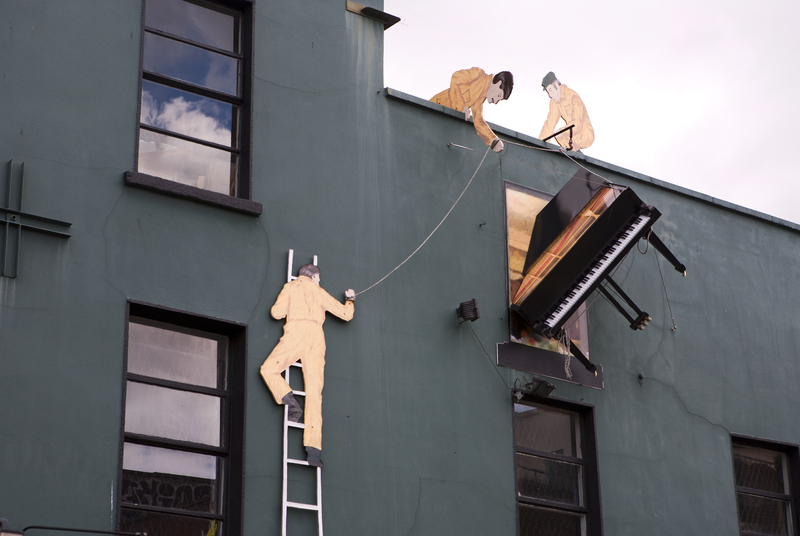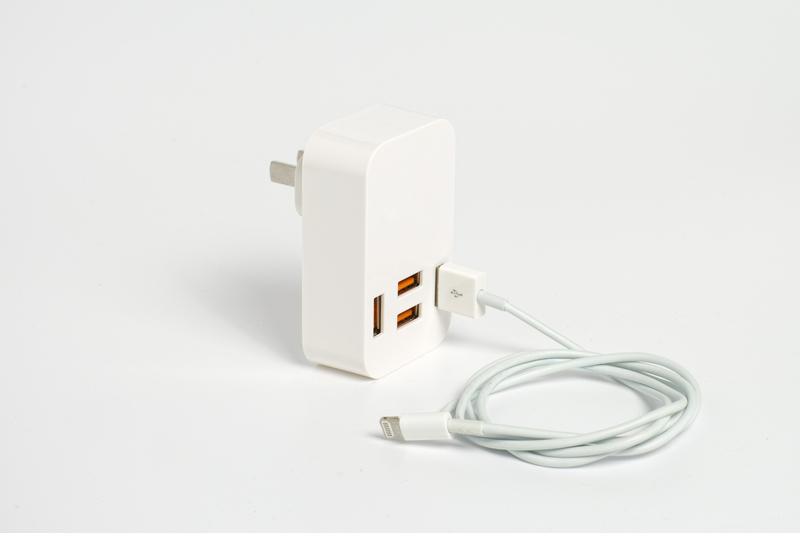Creative Solutions for Moving Your Bed and Mattress
Posted on 30/05/2025
Creative Solutions for Moving Your Bed and Mattress
When it comes to relocating, moving your bed and mattress can pose one of the greatest logistical challenges. Not only are beds and mattresses often bulky, but they also require careful handling to maintain their comfort and longevity. In this comprehensive guide, we'll explore unique and efficient ways to transport your bed and mattress without a hitch, offering practical advice, innovative packing techniques, and tips for ensuring a smooth transition to your new home.

Why Is Moving a Bed and Mattress So Challenging?
Unlike other items of furniture, beds and mattresses combine size with complexity. Not only do you have to handle large, unwieldy shapes, but you also need to disassemble, protect against damage, and preserve cleanliness during transit. If you don't prepare properly, mattresses can easily become stained, torn, or bent out of shape, and beds may suffer scratches or structural issues. Understanding the specific challenges of bed and mattress transportation can help you avoid common pitfalls.
General Preparation Tips Before Moving Your Bed and Mattress
- Measure All Entry Points: Ensure your bed and mattress will fit through doorways, hallways, and staircases in both your old and new locations.
- Clear Your Path: Remove obstacles along your intended route to avoid accidents or damage during the move.
- Gather the Right Materials: You'll need mattress bags or covers, moving blankets, stretch wrap, straps, and proper tools for disassembling furniture.
- Enlist Help: Many beds and mattresses are simply too heavy or unwieldy for one person.
Essential Packing Materials for Moving Mattresses and Bed Frames
- Mattress Bag: A tough, waterproof, tear-resistant bag designed specifically for mattresses.
- Moving Blankets: Thick, padded blankets to wrap bed frames and prevent scratches.
- Stretch Wrap: Plastic wrap for holding moving blankets in place and for extra dust protection.
- Zip Ties or Rope: To hold parts together and make carrying easier.
- Basic Tools: Wrench, screwdriver, Allen keys, or even a cordless drill for faster disassembly and reassembly.
Creative Ways to Move Your Bed and Mattress
1. The "Mattress Burrito" Technique
Mattresses are prone to tears, stains, and bending during a move. One innovative solution is the 'Burrito Method', which not only protects your mattress but also makes it easier to carry. Here's how to do it:
- Start by slipping your mattress into a high-quality mattress bag. Make sure the bag is fully sealed to protect against dirt and moisture.
- Lay out a clean moving blanket and place the bagged mattress on top.
- Roll the mattress tightly (as you would a burrito), keeping the blanket wrapped around it. Secure the ends with rope or straps.
- This makes the mattress more rigid and less likely to flop around--a big help when navigating narrow corridors or stairs.
Pro tip: For larger mattresses, recruit help and roll from both sides toward the center, then fold.
2. Disassemble for Easier Handling
If your bed frame is complex or features a large headboard, the best approach is to disassemble as much as possible.
- Remove the mattress and box spring first.
- Take out all slats, side rails, footboards, and headboards. Keep all nuts, bolts, and screws in a labeled plastic bag and tape it to a frame part.
- Stack bed frame parts together and wrap them in moving blankets or stretch wrap to prevent scratches.
Tip: Snap photos during disassembly so you can remember how to put it back together!
3. Use Furniture Dollies and Lifting Straps
For larger beds (like king-size or queen-size), lifting and maneuvering can be daunting. Rentals or purchases such as furniture dollies and lifting straps can turn what seems impossible into an easy move.
- Dollies are perfect for transporting folded mattresses, box springs, or bundled frame parts.
- Lifting straps can help two people share the weight of a mattress and maintain safe posture.
4. Creative Transportation: Roof Racks, Fold-Down Seats, and Pickup Beds
If you don't own a moving van, there are other ways to transport your mattress and bed. Consider these:
- Roof Racks: Secure a rolled or folded mattress to your car's roof rack using heavy-duty straps. Always double-check for highway safety!
- Fold-Down Car Seats: With some compact mattresses (like twin or full), you can fold your back seats down and slide the mattress right in.
- Pickup Trucks: Place your mattress flat in the bed; use a tarp and straps to keep it clean and secure. Avoid bending or folding excessively.
Warning: Never over-tighten straps or force a mattress to fit--this can compromise its internal structure and comfort.
5. Rent a Mattress Carrier or Specialized Mattress Cart
Some companies now offer specialized mattress carriers--think heavy-duty bags with handles or carts designed just for mattresses. These can make navigating stairs or long hallways a breeze, especially if you are doing the move yourself.
6. Protect From Moisture, Dirt, and Pests
Since mattresses can absorb odors, dust, and even bugs, protection is critical. Always use a mattress protector bag, tape it shut, and consider wrapping it in a clean blanket. If you need to store your mattress for more than a day, keep it in a dry, elevated area--never directly on concrete, which can wick moisture.
7. Enlist Professional Movers With Mattress Expertise
Some moving companies specialize in handling beds and mattresses. They have the experience, equipment, and packing materials necessary to ensure safe transport. While more expensive, this option reduces the risk of damaging your valuable sleep investment.
Common Mistakes to Avoid When Moving a Bed and Mattress
- Dragging the Mattress: Always lift. Dragging can rip fabric and damage internal springs or foam.
- Skipping the Mattress Bag: Even a short trip can expose your mattress to rain, mud, grease, or pests.
- Forgetting Small Parts: Keep screws and hardware together--store in labeled containers or bags taped to bed parts.
- Over-Folding: Only fold mattresses designed to be flexible, like certain memory foam models--coils or hybrid mattresses may be damaged by folding.
- Transporting On End for Long Periods: Prolonged standing can deform certain mattresses; move them flat whenever possible.
Solutions for Specific Types of Beds and Mattresses
Memory Foam and Latex Mattresses
- Roll, Don't Fold: These materials are flexible but shouldn't be sharply creased. Always roll gently and use a protective bag.
- Allow 24-48 Hours to Re-Inflate: After being rolled or compressed, give the mattress time to regain its full size before use.
Innerspring Mattresses
- Keep Flat: Innerspring mattresses don't handle bending well; keep them flat in the vehicle.
Adjustable Beds
- Disconnect Electrical Components: Carefully unplug and pack all electronics, taking photos of wiring.
- Separate and Wrap Each Component: Pack mattress, frame, and motors separately, each in padded covers or boxes.
DIY or Hire Professional Movers?
Should you tackle moving your bed and mattress on your own, or is it time to call in the experts? Here are pros and cons for each:
DIY Moving Pros and Cons
- Pros: Cheaper; flexible schedule; full control over the process.
- Cons: Risk of injury; potential for mattress/frame damage; can be stressful and time-consuming.
Professional Movers Pros and Cons
- Pros: Expertise, speed, and equipment; insured against damage; no heavy lifting for you.
- Cons: Higher cost; need to schedule in advance; less control over timing.
Eco-Friendly Tips for Moving Beds and Mattresses
- Reuse Packing Materials: Invest in reusable mattress bags and moving blankets.
- Donate or Recycle: Before moving, consider donating usable old beds or recycling mattresses through specialized programs in your city.
- Rent, Don't Buy: Renting moving equipment cuts down on waste.
After the Move: Setting Up Your Bed and Mattress
- Air Out Your Mattress: Remove it from the bag and let it air for a few hours to dispel any trapped odors or moisture.
- Sanitize the Frame: Wipe down all bed parts before reassembly.
- Double-Check for Hardware: Use your photos and hardware bag to ensure proper reassembly--tighten all bolts and screws securely.
- Test for Stability: Before putting on sheets, check the bed for creaks or wobbles.

Frequently Asked Questions (FAQs) About Moving Mattresses and Beds
-
Can you fold a mattress for moving?
Only certain memory foam and latex mattresses are designed to be folded. Innerspring and hybrid mattresses should always be kept flat to prevent damage. -
Is it safe to tie a mattress to your car roof?
Yes, IF it's tightly secured with proper straps and weather-proofed. However, it's best for short distances and legalities vary by state--always check local laws. -
How do I lift a mattress without hurting my back?
Use lifting straps, carry with a partner, and bend at your knees, not your waist. Don't overexert yourself. -
How can I move a mattress by myself?
If working solo, use a mattress sling or holder with handles. Slide the mattress onto a dolly whenever possible. Avoid stairs and ask for help if needed. -
Do I need professional movers for my bed frame?
If your frame is especially heavy (solid wood, adjustable, or antique), professionals may be worth the investment to avoid injury and damage.
Final Thoughts: Make Moving Your Bed and Mattress Easy and Stress-Free
With the right preparation, materials, and a few inventive approaches, moving your bed and mattress doesn't have to be a nightmare. Whether you opt for the "burrito" technique, specialized moving equipment, professional movers, or just a well-planned DIY move, you'll ensure that your bed arrives in perfect condition--and that you'll sleep well in your new home from day one!
Remember, a little extra effort in packing and transit can protect your sleep investment for years to come. Safe travels and sweet dreams!



